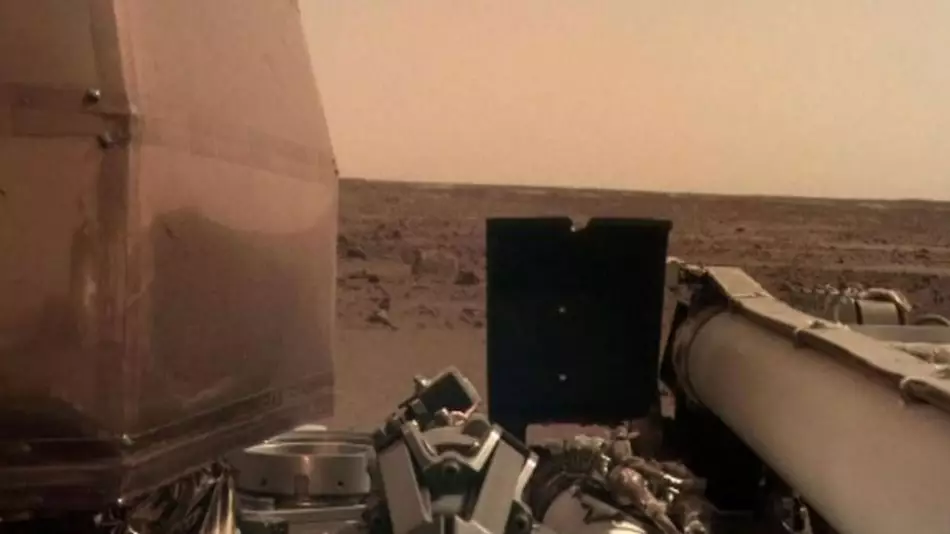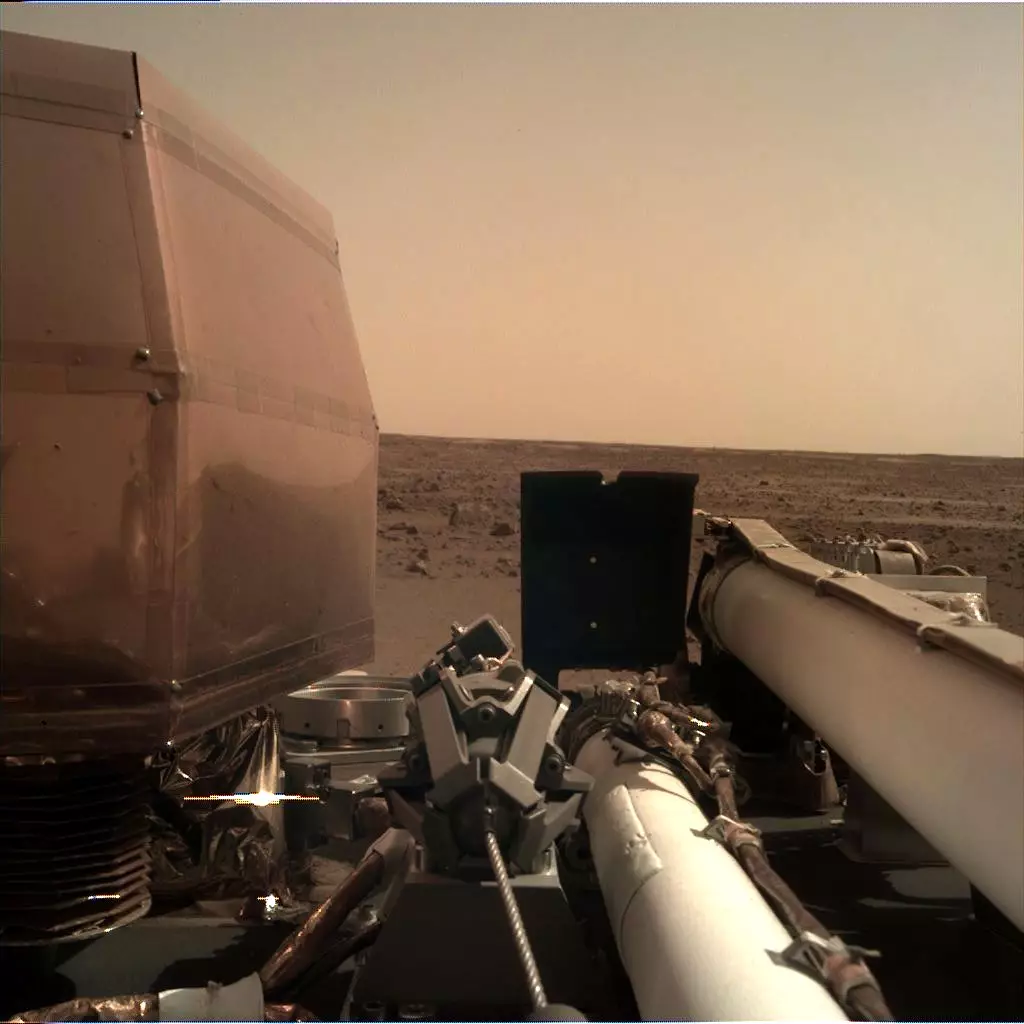
Yesterday NASA confirmed that the InSight probe had successfully landed on Mars, and the costly spacecraft has already sent back a little present to ground control.
With most long distance trips, what's the first thing that any self-respecting holiday maker does when they arrive in a foreign land? Take a photograph and send it to all their mates to show off about what a great time they're having, of course.
Advert
But the usual snapshot of the beach or the hotel isn't quite enough, you have to be in the picture as well - otherwise how do your jealous pals know it's not just a rip from Google?
Well it seems the humble selfie isn't beneath the world's leading centre for space exploration - with no friends to help out, the $1billion InSight probe took a photograph of itself and sent it back to the boffins at Houston, to show it had arrived in one piece.
The probe did initially send back a grainy image, which was shared on social media, before the clearer image was posted.

The mind-blowing shot was released on InSight's official Twitter page and shows the probe shortly after it landed on the site known as Elysium Planitia, and included part of the probe, with the vast expanse of the Martian surface in the distance.
Advert
According to reports, the image means the spacecraft's solar panels are working and that it is able to collect sunlight and recharge its batteries every day.
Tom Hoffman, InSight's project manager at Nasa's Jet Propulsion Laboratory, said: "The InSight team can rest a little easier tonight now that we know the spacecraft solar arrays are deployed and recharging the batteries.
"It's been a long day for the team.
"But tomorrow begins an exciting new chapter for InSight: surface operations and the beginning of the instrument deployment phase."
Landing on Mars is notoriously troublesome, with 10 out of 17 previous missions failing. So, engineers from the space agency were twitchy sending off InSight and its satellites, particularly when it hit Mars' atmosphere and was faced with a tricky seven minutes.
Advert
The InSight touched down on Mars just before 3pm EST (8pm GMT) on Monday, after undergoing what has been dubbed 'seven minutes of terror' - apparently travelling 13,200 mph (21,200 kph) made it very difficult to land in the planet's thin atmosphere. Who knew?
Over the next two years NASA is hoping to find out as much as possible about the mysterious red planet - specifically what it is made up of.
The multi-million pound space probe will use various devices to relay information back to NASA about the planet's deep structure, mapping its core, crust and mantle.
Featured Image Credit: NASATopics: World News, Interesting, US News, Nasa, Technology, space